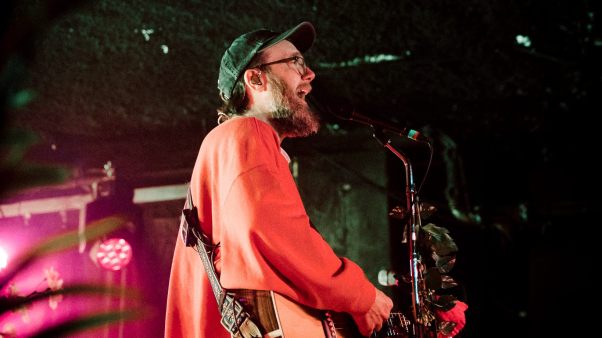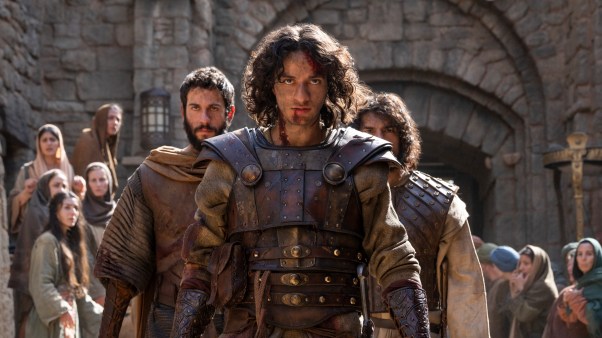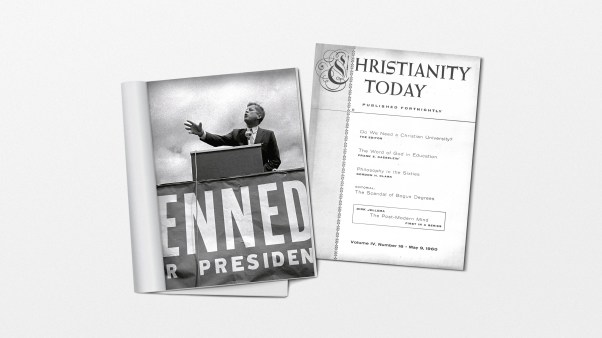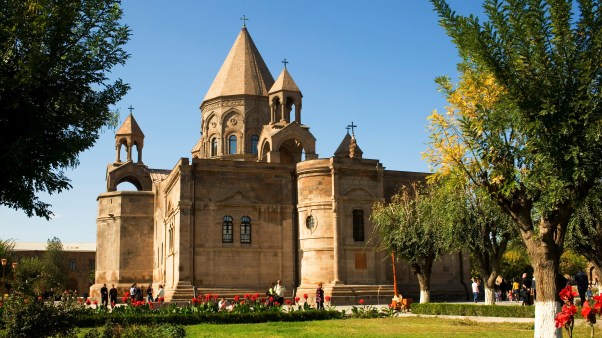For the first time in history, a criminal court has ruled on a case of antiquities forgery. One antiquities collector has been acquitted of all charges and another has been acquitted of all but several minor charges. The verdict is still out on the validity of an inscription that ties an ancient relic to the family of Jesus of Nazareth, although many Bible scholars say they have made their own decision.
In 2002, Christianity Today and other major news outlets carried the announcement of the discovery of an ossuary bearing an Aramaic inscription, “James, the son of Joseph, the brother of Jesus.” This carved stone box, typical of those used in Jewish burials of the first century, was suggested to be the repository of the bones of the brother of Jesus Christ. After Jesus’ death, James led the early church in Jerusalem until his death by stoning in A.D. 62.
The ossuary itself was undoubtedly authentic. But within months the Israel Antiquities Authority charged that the last part of the inscription, the portion mentioning Jesus, was fabricated. Scientific investigators reported that the patina, the aging of the surface, had been tampered with.
The owner of the ossuary, Tel Aviv collector Oded Golan, proclaimed his innocence as forgery charges were brought against him related to the ossuary and other relics, such as what is known as the Jehoash tablet. The dark stone tablet flecked with very tiny pieces of gold contains a 15-line inscription which appears to describe repairs to the ancient temple carried out by King Jehoash (2 Kings 11-12).
Charges were also brought against four others. Three of the defendants settled. Only Golan and Robert Deutsch maintained their innocence and endured the entire legal proceeding, living under a cloud of uncertainty for seven years. Golan will be sentenced later for trading in antiquities without a permit and one additional charge.
The cloud of uncertainty continues to hang over the object at the center of the dispute, the ossuary. While the judge said that the prosecutors failed to prove beyond a reasonable doubt that the inscription had been partially fabricated, that did not mean that it was authentic and from the first century.
“This is not going to move the consensus one bit in the scholarly world about the James box or any of these other artifacts,” said Mark Schuler, chairperson of the Department of Religion and Theology at Concordia University in St. Paul. Schuler directs a portion of the excavation of Hippos/Sussita, a Decapolis city in the time of Jesus, which overlooks the Sea of Galilee.
Like most archaeologists, Schuler is concerned about the trade in antiquities, which is legal in Israel. He knows that after the excavation closes each year, antiquities hunters come to the site with metal detectors. One year collectors stole a grinding stone that had been only partially excavated.
“The antiquities market is about treasure hunting, it’s about egos, it’s about wealth, and it clouds understanding,” he said. “The more we can regulate, and eliminate the antiquities market, the better it will be for scholarly understanding of the ancient world.”
Schuler was not critical of the Israeli archaeological establishment for trying to fight the illegal trafficking and creation of fake antiquities through the legal system. He believes it was just too easy to stymie their efforts.
“It’s a different level of truth in the legal system, a different standard,” he said.
Steven Ortiz, a professor of archaeology at Southwestern Baptist Theological Seminary in Ft. Worth, says the legal battle heightened the climate of skepticism in the archaeological world. Increased skepticism is good, especially in the case of sensational discoveries that surface in the antiquities market. But authentic discoveries are now going to be tainted as well, and held up to increased scrutiny.
“Scholars will have to be vigilant about how we discuss our finds, how we present them to the public, and also vigilant in authenticating the finds,” Ortiz said. “We have to come out of our research cubicles and get out and engage the public.”
One of the leading U.S. experts in ancient documents, Christopher Rollston, was called to testify at the trial about five years ago. Rollston is a professor of Semitic studies at Emmanuel Christian Seminary in Johnson City, Tennessee.
Rollston testified about the Jehoash tablet and two other items that he is certain are forgeries. Although he is suspicious of the James ossuary inscription, and was invited to address it during his 13 1/2 hours on the witness stand, he did not address it.
The fact that the defense attorneys could find experts who were uncertain about the antiquities was all that was needed. “All you need is a few people who say I don’t know or we can’t tell, then it makes it very hard to find that these are definitive forgeries,” Rollston said. “The verdict of this trial will allow people on all sides to assert victory of some sort.”
The lesson of the James ossuary case, according to Dallas Seminary New Testament expert Darrell Bock, is that some matters do not need to be sorted out by lawyers. “Some deliberations deserve the debate they engender in the university setting,” Bock concluded.
In the end, Judge Aharon Farkash, in his courtroom in Jerusalem, came to the same conclusion. “This is not to say that the inscription on the ossuary is true and authentic and was written 2,000 years ago,” he said. “Only the future will tell.”
Copyright © 2012 Christianity Today. Click for reprint information.
Related Elsewhere:
Christianity Today‘s earlier coverage of the James ossuary includes:
The Mystery of Antiquities | Ossuary owner charged with forgery. (Feb. 16, 2005)
Rush to Judgment? | Israel Antiquities Authority’s ‘findings’ bother many archaeologists. (April 29, 2004)
Biblical Archaeology’s Dusty Little Secret | The James bone box controversy reveals the politics beneath the science. (Sept. 19, 2003)
Bones of Contention | Why I still think the James bone box is likely to be authentic. (Sept. 22, 2003)
Ossuary Questions Remain | Israel Antiquities Authority says ‘brother of Jesus’ inscription is a forgery, but supporters say its report may be flawed. (June 20, 2003)
Oh, Brother | Most everyone agrees that the James ossuary is a significant find. Ask what it means, however . . . (March 17, 2003)
Finding God in a Box | Have archaeological discoveries like the James ossuary served or obscured the quest to verify the Bible? (Jan. 31, 2003)
Stunning New Evidence that Jesus Lived | Scholars link first-century bone box to James, brother of Jesus (Oct. 21, 2002)








